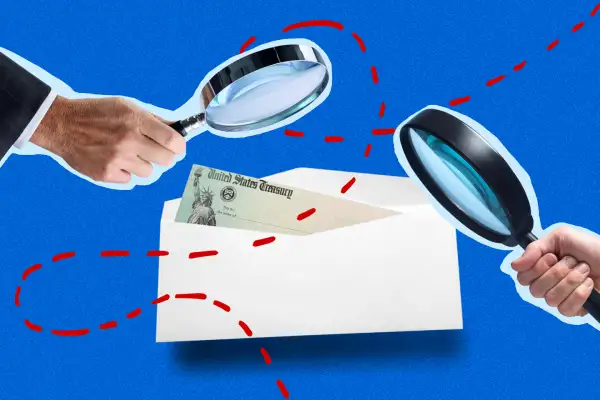Tracking Your Tax Refund Will Be 'Significantly' Easier Next Year: IRS

Tax season is widely dreaded among Americans. But next year, it might be a little less dreadful thanks to an IRS overhaul.
The Where's My Refund? tool, launched by the IRS in 2002 and used by millions since to track their tax refunds, is getting a major makeover. In response to complaints about the tool's lackluster features, the government agency says it's rolling out a slew of enhancements that should be ready when you file your taxes in 2024.
Where's My Refund? allows filers to track their tax refunds all the way to their bank accounts. At least, that's the idea — it has been criticized in the past by the IRS's internal watchdog organization, the Taxpayer Advocate Service, for offering fairly limited information about where in the pipeline a refund actually is. Users are often directed to call the IRS anyway to inquire about their refunds, all but defeating the purpose of the online tool.
But this won't be the case in 2024, according to Secretary of the Treasury Janet Yellen. In a Tuesday post on X, formerly known as Twitter, Yellen said that the IRS is preparing "significant improvements" to the Where's My Refund? service and others, paid for with Inflation Reduction Act funding.
Among those upgrades are more detailed refund status messages for users about what, exactly, is happening with their money.
Whereas previous messages simply stated that "Your tax return is still being processed. A refund date will be provided when available," new messages will tell users when they need to provide more documentation or verify information with the IRS in order to receive their refund faster. The IRS says the new, plain-language updates will help to hopefully "reduce the need for taxpayers to call the IRS for answers to basic questions."
Where's My Refund? is the most popular tool the IRS offers. In 2022, 54 million taxpayers used it: 16% of the U.S. population, as Yellen said at a Treasury Department event on Tuesday. The IRS estimates that taxpayers will view these newly improved messages upwards of 70 million times during the 2024 tax season, and it says it plans for further upgrades in the coming years.
The improvements will help the tool to "provide clearer and more detailed information so taxpayers can address barriers to processing their returns and receive their refunds quickly," Yellen added.
Other improvements at the IRS
The Where's My Refund? changes are just one aspect of a top-to-bottom overhaul of the IRS experience funded by the Inflation Reduction Act. The 2022 act, a hallmark of the Biden presidency, provides billions to the previously cash-strapped IRS to help it improve enforcement against wealthy individuals and corporations. Republican lawmakers have remained largely opposed to the infusion of IRS funding, arguing that it is far too much money for the agency and could impact everyday taxpayers.
However, the IRS seems to be putting those dollars to work. For the 2023 season, it significantly beefed up its phone service by hiring 5,000 additional call center employees. These additions, it says, have cut wait times by over 20 minutes and put 87% of callers in touch with real people instead of robots.
For 2024, it's planning to build on the improved call capabilities by introducing a callback option; now, callers with wait times longer than 15 minutes will be able to hang up the phone and have an IRS agent call them back when available.
The agency's paperless correspondence initiative is also now three months ahead of schedule. With it, taxpayers will be able to submit responses to IRS notices entirely digitally rather than having to snail-mail them in.
Finally, the IRS's most ambitious plan, Direct File, will be launching in pilot form this upcoming tax season. In 13 states, low- to moderate-income Americans with simple tax returns will be given access to a new tool to submit their filings directly to the IRS for free — an alternative to private tax filing services.
More from Money:
The IRS Just Increased the Amount You Can Save in Your Retirement Accounts
